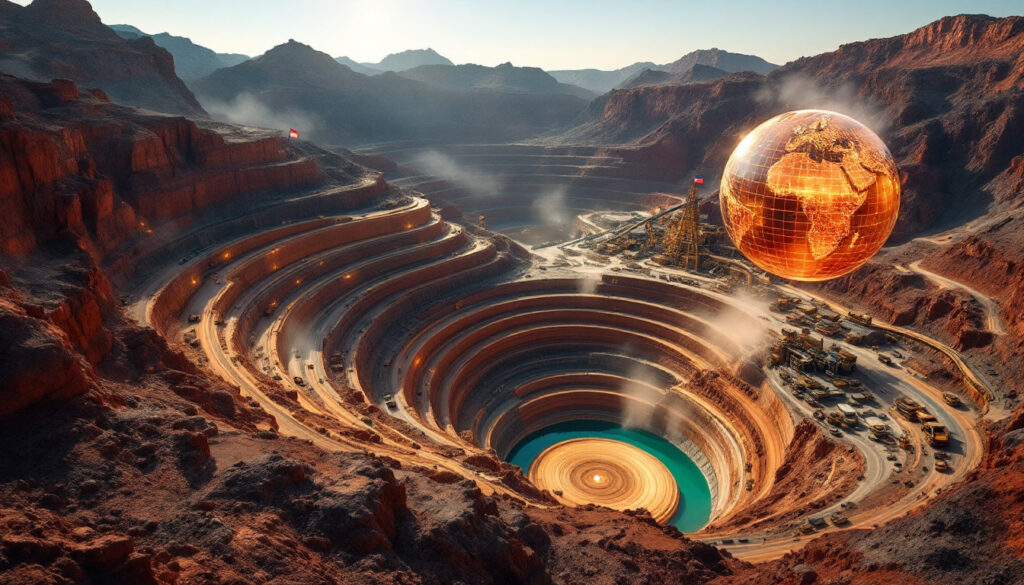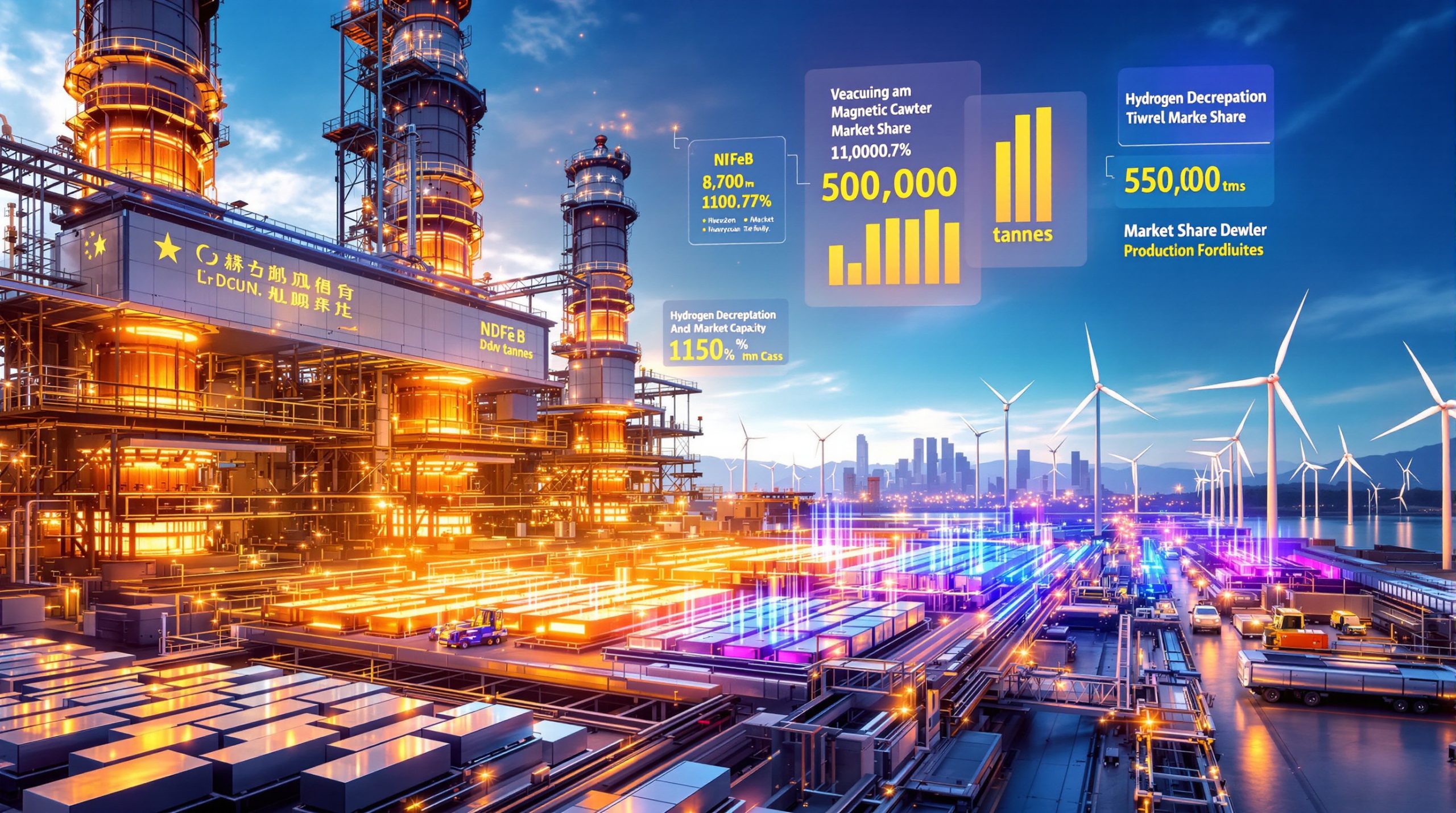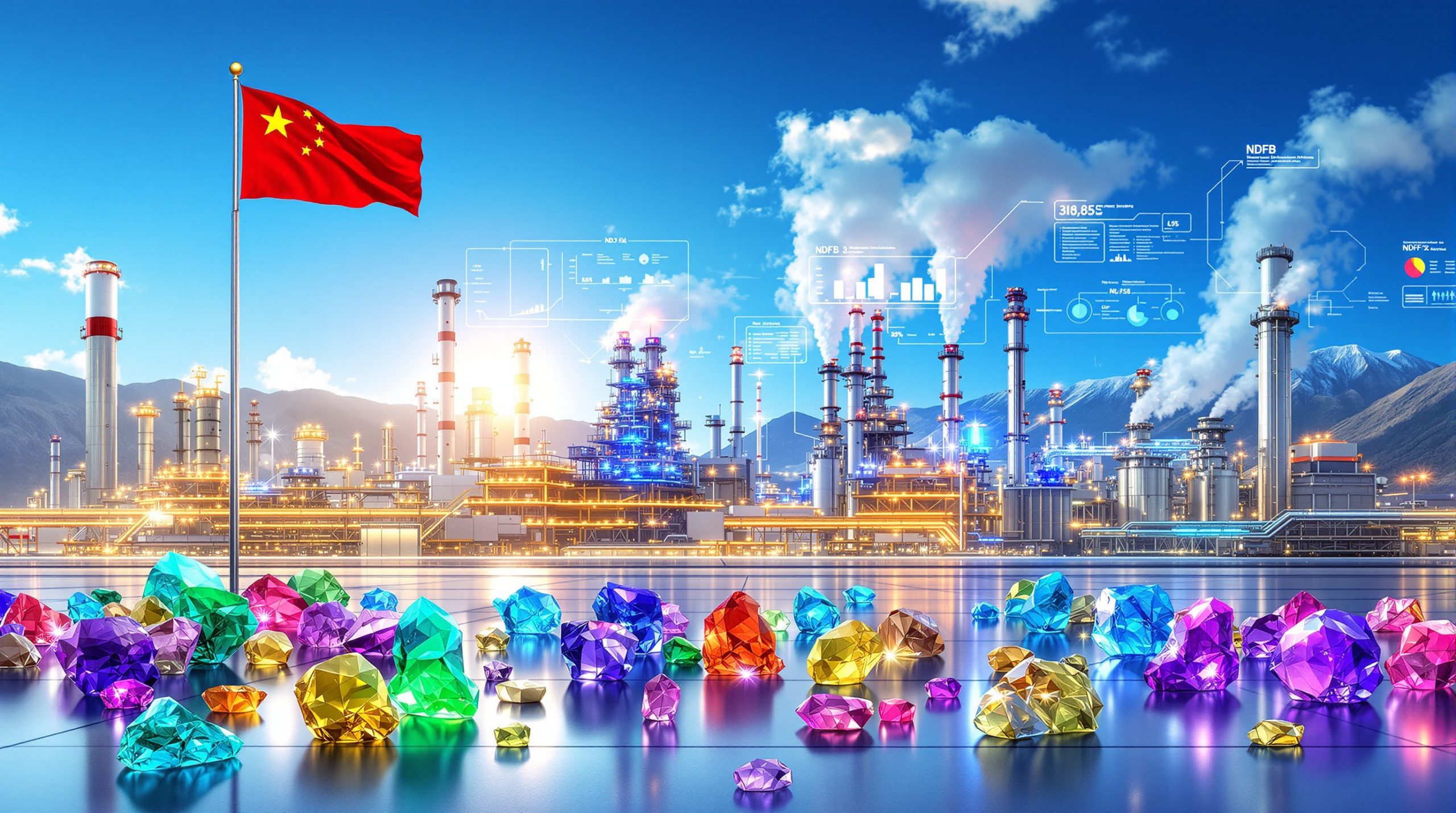The Growing Importance of Copper in the Global Economy
Copper’s Role in the Energy Transition
Copper’s conductivity and durability make it critical for renewable energy systems, electric vehicles (EVs), and grid infrastructure. BHP forecasts annual demand will reach 50 million tonnes by 2050, driven by decarbonization policies and EV adoption. BloombergNEF estimates $2.1 trillion in mining investments are needed by 2050 to meet net-zero targets, highlighting the sector’s strategic importance.
Emerging technologies like offshore wind farms and battery storage further amplify copper’s centrality to the energy transition. A single offshore wind turbine can contain up to 8 tonnes of copper, while the average EV requires 2.5 times more copper than conventional vehicles.
Investment Requirements for Future Supply
Meeting projected demand requires upgrading aging mines and discovering new deposits. For example, BHP’s $10.8 billion decade-long investment in Escondida aims to optimize concentrator efficiency and extend mine life.
However, permitting delays, community opposition, and water scarcity in regions like Chile’s Atacama Desert complicate expansion efforts. Understanding copper prices dynamics is crucial as the average timeframe from discovery to production has stretched to 16 years, creating potential supply constraints as demand accelerates.
What Defines the World’s Largest Copper Mines?
Production Metrics and Ownership Structures
The top mines are distinguished by annual output exceeding 300,000 tonnes, often under joint ventures to share risks. Escondida, producing 1.28 million tonnes in 2024, is jointly owned by BHP (57.5%), Rio Tinto (30%), and Japanese consortiums (12.5%). Such partnerships enable capital-intensive projects but require navigating complex stakeholder interests.
The geographic distribution of top producers reveals South America’s dominance, with Chile and Peru hosting five of the world’s biggest copper mines. These operations typically process massive volumes of low-grade ore (0.5-1% copper content) using economies of scale to remain profitable.
Operational Challenges and Expansions
Mines face productivity hurdles from extreme weather, labor strikes, and declining ore grades. In 2023, Grasberg’s output fell due to flooding, but it rebounded to 816,466 tonnes in 2024 after repairs. Conversely, Collahuasi’s production dipped 2.5% in 2024 amid equipment upgrades.
Long-term viability hinges on adopting automation and renewable energy to curb costs and emissions. Several operations are implementing autonomous haulage systems and investing in desalination plants to reduce freshwater consumption in water-stressed regions.
The Top 10 Copper Mines by 2024 Production
1. Escondida Mine (Chile)
Escondida’s 2024 output of 1.28 million tonnes—a 16% year-on-year increase—reflects improved ore recovery rates and a $2 billion concentrator upgrade. The mine contributes ~5% of global supply, with reserves sufficient for 50+ years. Its Q1 2025 production rose 10%, signaling operational resilience.
The world’s largest copper mine employs over 10,000 workers and processes approximately 1.3 million tonnes of ore daily across three concentrator plants. Despite its scale, Escondida faces challenges from declining ore grades, which have fallen from over 1.5% to approximately 0.8% copper content.
2. Grasberg Mine (Indonesia)
Owned by Freeport McMoRan and PT Mineral Industri Indonesia, Grasberg produced 816,466 tonnes in 2024, recovering from 2023 flooding and landslides that damaged its milling complex. The transition from open-pit to underground mining aims to access deeper high-grade ores, though seismic risks persist.
Grasberg stands out for its exceptionally high-grade ore, averaging 1.1% copper, and significant gold by-products that substantially reduce production costs through credits. The mine’s remote location at 4,100 meters elevation in Papua creates unique logistical challenges.
3. Collahuasi Mine (Chile)
A 2.5% production decline to 558,636 tonnes in 2024 underscores challenges in sustaining output from mature deposits. Glencore and Anglo American are exploring hydrogen-based haulage to reduce diesel dependency.
After 21 years of continuous operations, Collahuasi maintains some of the industry’s most efficient water usage metrics, recycling over 85% of process water in the water-scarce Atacama region. The operation’s recent $1.3 billion life extension project aims to maintain production levels through 2040.
4. Kamoa-Kakula Mine (Democratic Republic of Congo)
Kamoa-Kakula’s 2024 production reached 437,061 tonnes, an 11% increase from 2023. This relatively new operation, owned by Ivanhoe Mines, Zijing Mining, the DRC government, and Crystal River Global, has quickly established itself among the top copper mines trends.
The mine is recognized as the world’s lowest carbon-emitting major copper operation, leveraging hydroelectric power to achieve emissions of just 0.19 tonnes CO₂ per tonne of copper produced—roughly 80% below the industry average.
5. Buenavista Mine (Mexico)
Buenavista produced 433,000 tonnes in 2024, a 4% increase from 2023’s 416,600 tonnes. Wholly owned by Grupo Mexico subsidiary Southern Copper, it holds the distinction of being North America’s oldest continuously operating copper mine, with production dating back to 1899.
The operation has undergone multiple modernization phases, with its most recent $3.5 billion expansion including new leaching facilities and a state-of-the-art concentrator that boosted capacity by 175,000 tonnes annually.
6. Cerro Verde Mine (Peru)
Cerro Verde’s output declined 3.71% to 430,459 tonnes in 2024. This joint venture between Freeport McMoRan, Buenaventura, and Sumitomo operates one of the world’s largest concentrator facilities, processing 409,500 tonnes of ore daily.
Located in Peru’s southern copper belt, Cerro Verde has navigated periods of social unrest and water scarcity by implementing community development programs and constructing a wastewater treatment plant that serves both mining operations and the nearby city of Arequipa.
7. Antamina Mine (Peru)
Antamina’s production decreased 2.13% to 413,000 tonnes in 2024. This polymetallic operation, jointly owned by Glencore, BHP, Teck Resources, and Mitsubishi, produces significant zinc, silver, and molybdenum by-products that improve its cost position.
Situated at 4,300 meters elevation in the Peruvian Andes, Antamina’s complex metallurgy requires sophisticated ore sorting and selective processing to maximize recovery of multiple metals from varying ore types.
8. Tenke Fungurume Mine (DRC)
CMOC’s $2.51 billion expansion doubled Tenke’s capacity, enabling production of approximately 400,000 tonnes in 2024—a remarkable 42.7% year-over-year increase. However, disputes with state-owned Gécamines over royalty payments highlight jurisdictional risks in the DRC.
The operation processes exceptionally high-grade oxide ore, averaging 2.3% copper content, through a combination of leach, solvent extraction, and electrowinning technology. This processing route produces copper cathode directly, eliminating the need for smelting.
9. KGHM Polska Miedz Mine (Poland)
KGHM’s integrated operations in Poland produced an estimated 395,160 tonnes in 2024, maintaining stable output compared to 2023. As Europe’s only representative on this list, these deep underground mines extract ore from depths exceeding 1,200 meters.
KGHM’s operations feature unique geology with significant silver content, making it one of the world’s largest silver producers as a by-product. The company’s vertically integrated business model includes mines, concentrators, smelters, and refineries.
10. Polar Division Mine (Russia)
Norilsk Nickel’s Polar Division mines increased copper output approximately 6.3% to an estimated 345,000 tonnes in 2024. These operations in Russia’s Arctic region are primarily nickel mines, with copper as a significant by-product.
Operating in extreme Arctic conditions with temperatures reaching -40°C, these mines face unique challenges including permafrost, limited transportation access, and short construction seasons.
How Do Production Changes Impact Global Copper Supply?
Factors Affecting Production Fluctuations
Weather events like Chile’s unprecedented floods in 2023 can disrupt even the largest operations, while labor disputes at major mines can remove hundreds of thousands of tonnes from global supply. Regulatory changes, such as Indonesia’s mineral export policies, create unpredictable shifts in market availability.
Technical issues, including tailings dam constraints, mill optimization challenges, and power supply disruptions, frequently cause production shortfalls. The industry’s lengthy development timeline—averaging 16 years from discovery to production—means supply responses to price signals are inherently delayed.
Case Study: Cobre Panama Mine Closure
The government-ordered shutdown of First Quantum’s Cobre Panama removed 330,863 tonnes of annual supply, equivalent to 1.3% of global production. This underscores vulnerabilities in concentrated supply chains and the need for diversified sourcing.
The Cobre Panama case illustrates broader resource nationalism trends, where governments seek to capture greater economic value from natural resources through increased taxes, royalties, or ownership stakes. This mine’s $10 billion development represented one of the largest private investments in Panama’s history before its controversial closure.
What Does the Future Hold for Copper Mining?
Expansion Projects at Existing Mines
BHP’s $10.8 billion investment plan for Escondida focuses on water security through desalination and concentrator optimization to process declining ore grades. CMOC’s successful doubling of Tenke Fungurume production demonstrates how brownfield expansions can deliver significant supply growth with lower technical risk than greenfield projects.
Anglo American and Glencore are evaluating a potential $1.8 billion expansion at Collahuasi to extend mine life and maintain production levels. The industry increasingly favors expanding existing operations over developing new mines due to lower permitting hurdles and established infrastructure.
Environmental Considerations and Sustainability
Kamoa-Kakula’s industry-leading low carbon emissions demonstrate how modern mines can align with climate goals through renewable energy and efficient design. Leading producers are increasingly adopting dry-stack tailings technology to reduce water consumption and dam failure risks, though implementation costs remain high.
Water management has become critical, with Escondida investing over $4 billion in desalination capacity to eliminate freshwater extraction from vulnerable Andean aquifers. The copper industry’s evolving ESG practices will determine its social license to operate in increasingly environmentally conscious jurisdictions.
Emerging Technological Solutions
In-situ leaching technology, which extracts copper without conventional mining, is advancing toward commercial application for low-grade resources previously considered uneconomic. Breakthrough bioleaching technologies using specialized bacteria to extract copper from sulfide ores could unlock additional resources while reducing energy consumption and emissions.
Digital twins, machine learning-based predictive maintenance, and autonomous operations are improving recovery rates and reducing downtime at leading mines. These innovations may partially offset declining ore grades, which have fallen approximately 30% over the past two decades.
FAQ About the World’s Biggest Copper Mines
How much copper does the world’s largest mine produce?
The Escondida mine in Chile is the world’s largest copper producer, generating 1.28 million tonnes in 2024, representing a 16% increase from its 2023 production. This single operation accounts for approximately 5% of global copper supply and processes over 1.3 million tonnes of ore daily.
Which countries host the most top copper mines?
Chile and Peru dominate the rankings with multiple mines in the top 10, while the Democratic Republic of Congo has two mines in the top 10. Other countries with top-producing mines include Indonesia, Mexico, Poland, and Russia. Chile’s copper trends remain the world’s most productive copper region, containing approximately 23% of global reserves.
How is ownership structured at major copper mines?
Most of the world’s largest copper mines operate under joint venture structures with multiple stakeholders, often combining major mining companies with state-owned enterprises and investment firms. This risk-sharing approach helps fund the multi-billion dollar capital requirements while diversifying geopolitical and operational risks.
What impact do these mines have on global copper supply?
The top 10 mines represent approximately 25% of global copper production. Disruptions at even one major operation, as seen with the Cobre Panama closure, can significantly impact global copper market insights and price movements.
How are major copper mines addressing sustainability concerns?
Leading mines like Kamoa-Kakula are implementing low-carbon technologies, while others are investing in water conservation, renewable energy, and more efficient extraction methods to reduce environmental impact. Additionally, copper smelting dynamics are evolving as many operations are targeting carbon neutrality by 2050, with intermediate emissions reduction goals of 30-50% by 2030.
Ready to Stay Ahead of the Next Major Copper Discovery?
Discovery Alert’s proprietary Discovery IQ model delivers instant notifications on significant ASX mineral discoveries, including copper, transforming complex data into actionable insights for investors. Explore why major mineral discoveries can lead to significant market returns by visiting the Discovery Alert discoveries page and position yourself ahead of the market.




